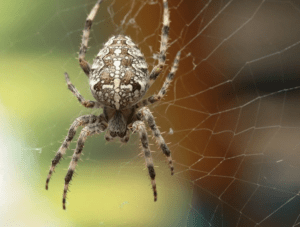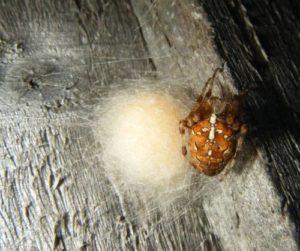Crusader spider: a small animal with a cross on its back
Nature decorates animals in an amazing way. An example of this is a spider cross, with the same pattern on the abdomen. This decoration allows the arthropod to defend itself from enemies.
Content
Cross-spiders: photo
Description of the spider
Name: Cross
Latin: araneusClass: Arachnida - Arachnida
Squad: Spiders - Araneae
Family: Orb-weaving spiders - Araneidae
 | Habitats: | everywhere |
 | Dangerous for: | small insects |
 | Attitude towards people: | not dangerous |
Cross spiders - a type of spider from families of orbs. They are ubiquitous and there are more than 1000 species.
Structure
Like all spiders body structure has a cephalothorax, belly and limbs. Covers everything with a chitinous shell.
Females are much larger, up to 4 cm in size, while males do not grow more than 1 cm.
In most species, the camouflage color is gray, brown, beige and brown. But depending on the species of spiders, the shades may vary.
The cross has 4 pairs of eyes, but it does not have good eyesight. On the contrary, he sees indistinctly and only silhouettes.
These are the main sense organs for the animal - the hairs that cover the entire body. They respond to sounds and vibrations in the air.
Spider life span
Crosses are one of those spider speciesthat have the shortest, by the standards of a spider, life. Males die immediately after mating, and the female prepares a cocoon for offspring, lays eggs and dies as well.
Range and habitation
The cross spider is a common species. He lives in Europe and many American states. Depending on the species, they can live:
- in coniferous forests;
- in the swamps;
- in plantations;
- shrubs;
- in tall grass;
- faces and gardens;
- rocks and grottoes;
- mines and barns;
- around people's homes.
Hunting and prey
The cross spider uses a large trapping net for hunting. Weaving a net is a regular process, because a lot of garbage and large animals get into it. The spider itself can break it and make a new one.
The cross spider has one of the most ingenious and durable cobwebs. This excellent hunting tool is designed so that the spider itself never gets stuck.
Near the spreading web there is always an animal shelter made of leaves. So he waits for his prey. When a small insect gets into a trap, the spider feels movement and gets out of hiding.
The spider's venom is very strong and the caught victim quickly becomes a nutrient solution for the spider.
Interestingly, he instinctively defends himself. If too much prey or an insect gets into the web, which can cause harm, the spider quickly breaks the web and leaves.
Reproduction
The cross spider is a dioecious animal. To call the female to mating, the male climbs into the nets and begins to gradually sip them, shaking and raising his legs. This is a kind of marriage ritual.
The male dies immediately, and the female prepares a dense cocoon from her web for some time. She wears it until she lays her eggs. This occurs in autumn, after which the female also dies.
Eggs lie in a cocoon until spring. Its special structure allows spiderlings to comfortably endure frost and water. When warming, they begin to hatch from the cocoon, but they sit there for some time, until warming.
Small spiders, after getting out of their safe hiding place, quickly disperse in search of food and in order to avoid the fate of becoming food for predators or larger arachnids.
Spiders and people
This type of spider prefers to build its dwellings away from people. They have a potent venom that quickly kills many insects. It is also dangerous on some invertebrates and rodents.
Crosses are not dangerous for people. Even if large individuals are able to bite through the skin, then the poison is not enough to poison. When bitten, there is a slight pain and burning sensation, in some cases, numbness.
Cross spiders very easily adapt to living conditions. they are often raised as pets. There are a number of rules to observe for growing.
Varieties of crosses
Of the large number of cross-type spiders, a little more than 30 varieties are found on the territory of the Russian Federation. Among them there are rare specimens.


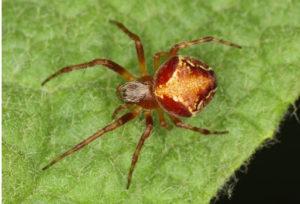

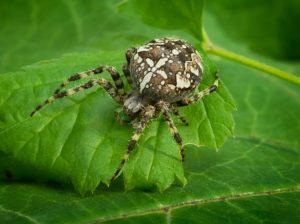

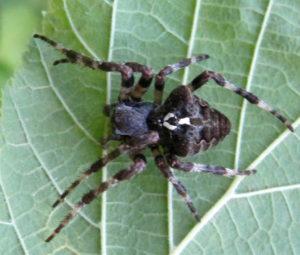



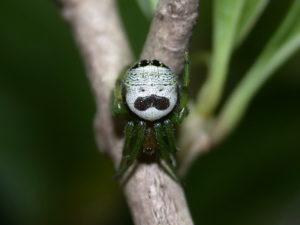

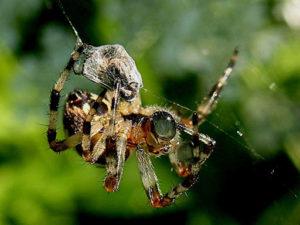

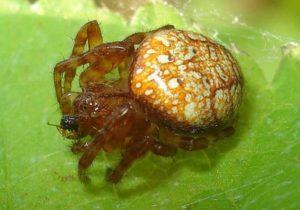

Conclusion
The cross spider is a constant and very useful neighbor of a person. It eats a large number of insects, which can harm agriculture. This small hunter has a strong web and strong poison, but is not at all dangerous to humans.
Previous